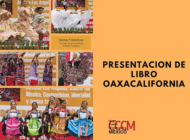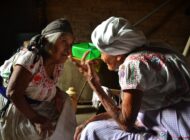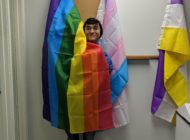The Valley Community Clinic has served the uninsured and patients on Medi-Cal for 40 years. Federal stimulus dollars and changes brought about by health care legislation has helped the clinic somewhat. But meeting the needs of some of the 28 percent of Angelenos who lack medical insurance is still a challenge.
By Karoline Steavenson
EL NUEVO SOL

Valley Community Clinic has seen its patient load increase significantly in recent years. Photo by Karoline Stevenson / ENS
James Anderson is a veteran and has health coverage through the Veteran’s Administration. He is also 64-years-old but since he’s still self-employed and hasn’t yet filed for Medicare, he doesn’t have dental insurance.
When he broke off part of a tooth he came to the Valley Community Clinic in North Hollywood to see if the dentist could help him.
“They patched it. They basically called it a Band-Aid to avoid having a crown which is very expensive…they hope this will patch it up,”Anderson said.
Anderson is one of as many as 2.7 million people in Los Angeles County who is uninsured or underinsured. Without insurance a dental crown can cost anywhere from $750 to $2,000. His treatment at the clinic that day was free.
Anderson’s business income as a private investigator has dropped steadily over the past few years. Without the help of the Valley Clinic he might have to live in pain.
Interview with James Anderson
Located at the corner of Coldwater Canyon Boulevard and Vanowen Street in North Hollywood, the interior of the VCC is painted a sunny yellow. It offers general physicians, a dentist, an optometrist and a pharmacy all under one roof. Like a conventional doctor’s office, it takes patients by appointment only.
VCC started life in the 1970s as the North Hollywood Free Clinic. It is one of several medical clinics serving the San Fernando and Santa Clarita Valleys designed to help the uninsured and those on Medi-Cal and other government sponsored health insurance programs. The clinics were designed to keep patients out of hospital emergency departments when they need non-emergency treatment and give them a resource for regular medical care.
The recession of the past few years and the high unemployment rate in Los Angeles has strained the resources of VCC.
“In the past year or two we’ve taken on over 2,000 new patients and we’re planning to take on about 1,500 more in this fiscal year,” said Judi Rose, director of development for VCC. “Our mission is to take care of the uninsured.”
According to the California Employment Development Department, the unemployment rate in L.A. County is about 12.6 percent.
“Most of our new patients…we’ve gotten in the last few years are probably directly related to (unemployment),” Rose said. “We have a lot of patients who are suddenly unemployed and unexpectedly uninsured, maybe for the first time in their lives, and they’re coming to us kind of shell-shocked.”
Judi Rose (part 1)
[audio:http://www.elnuevosol.net/wp-content/uploads/Rose-Part-1-Interview1.mp3|titles=Rose Part 1 Interview]Judi Rose (part 2)
[audio:http://www.elnuevosol.net/wp-content/uploads/Rose-Part-2-Interview1.mp3|titles=Rose Part 2 Interview]VCC also cares for hundreds of children who are covered by the state administered Healthy Families program. Healthy Families is low cost insurance for children and teenagers who do not qualify for Medi-Cal and are not covered by private insurance. Parents or guardians pay premiums for Healthy Families but their premium amount is determined by their income.
Reyna Meza, 22, brings her son Joshua to the clinic. It has been a reliable resource for her family since she was a child.
“When I was young my mom used to bring me here so I changed him (to) here,”Meza said.
Interview with Reyna Meza
[audio:http://www.elnuevosol.net/wp-content/uploads/Meza-Interview1.mp3|titles=Meza Interview]Meza and her son are on Medi-Cal, another kind of government health coverage for those on low incomes. To qualify an individual must be on Social Security Disability, blind, enrolled in certain state Welfare programs, be in a skilled nursing home or have low income and be the caretaker of a dependent child under age 21.
Interview with Alma Martinez
[audio:http://www.elnuevosol.net/wp-content/uploads/Martinez-Interview1.mp3|titles=Martinez Interview]VCC is also supported by donations and grants from businesses and individuals plus grants from the federal government. According to Recovery.gov, the tracking website for the $787 billion dollar Recovery Act designed to save and create jobs, VCC has received over a million dollars in grant money as a result of that legislation.
About $406,000 from the Recovery Act will provide and maintain dental services. Another $752,000 will pay for updating the clinic to a paperless medical records system, updating their phone systems, and improving telecommunications.
The Valley Clinic is part of a larger network of clinics, hospitals and other non-profit and government agencies organized into the Valley Care Community Consortium. Consortium members join forces to regularly assess the health care needs of the community.
The consortium was formed in response to state Senate Bill 697. SB 697 was designed to hold not-for-profit health caregivers accountable for serving the public interest in exchange for tax benefits.
The consortium prepares a report for the state legislature every three years. The report describes the health needs of the community and what not-for-profit consortium members have done or plan to do to meet those needs.
Joni Novosel, director of the consortium, has witnessed the services of all member clinics and hospitals been strained to their limits.
“As the unemployment rate in California increase so too does the number of uninsured…so what we’re seeing is a greater demand on the safety net health care system,” Novosel said. “We’re seeing more folks seeking care in the county clinics and in the public/private partnership clinics. And we’re also seeing…and increase in the ED (emergency department) usage.”
The new health care legislation passed by Congress last year contains many portions that will not go into effect until the next few years. But as the nation’s unemployment rate stagnates at nine percent, Novosel is optimistic about the changes that she sees creeping into the health care system.
“I think that there is a realization that the clinics and the county facilities are going to have to become patient centered medical homes,” said Novosel. “I think there’s a much greater emphasis on prevention and primary care. So I do see a lot of restructuring occurring around that.”
Interview with Joni Novosel
[audio:http://www.elnuevosol.net/wp-content/uploads/Joni-Novosel-Interview1.mp3|titles=Joni Novosel Interview]Slideshows:
Valley Community Clinic, Part 1, Interview with Judi Rose
James Anderson
Reyna Meza
Alma Martinez
Judi Rose, VCC Director of Development, Discusses How the Clinic Has Been Affected by the Recession
Interview with Joni Novosel, Director of the Valley Care Community Consortium
For More Information:
VCCC Triennial Report on the Santa Clarita and San Fernando Valleys
Tags: dental care health care health insurance Healthy Families Los Angeles North Hollywood Valley Community Clinic vision care


















